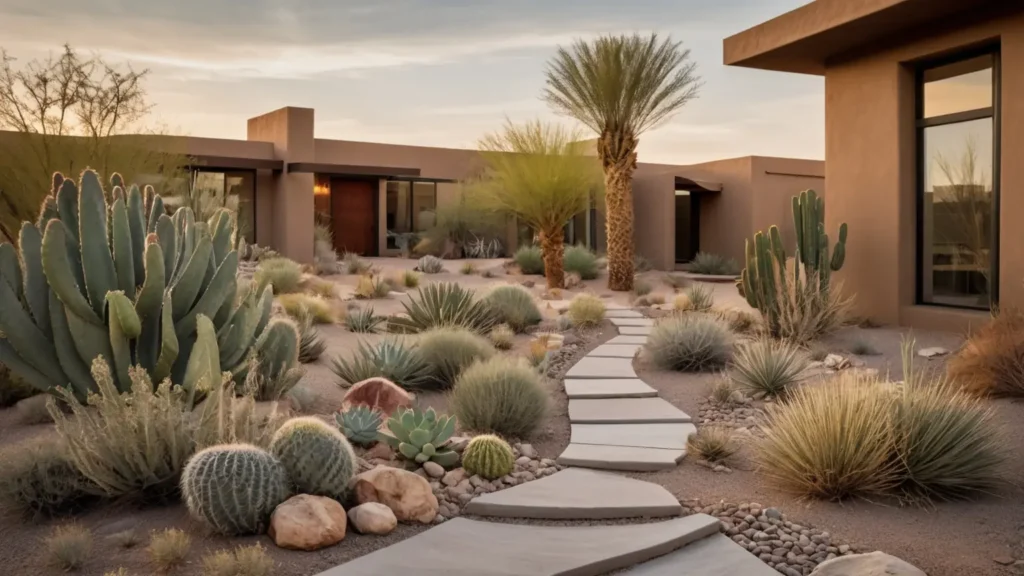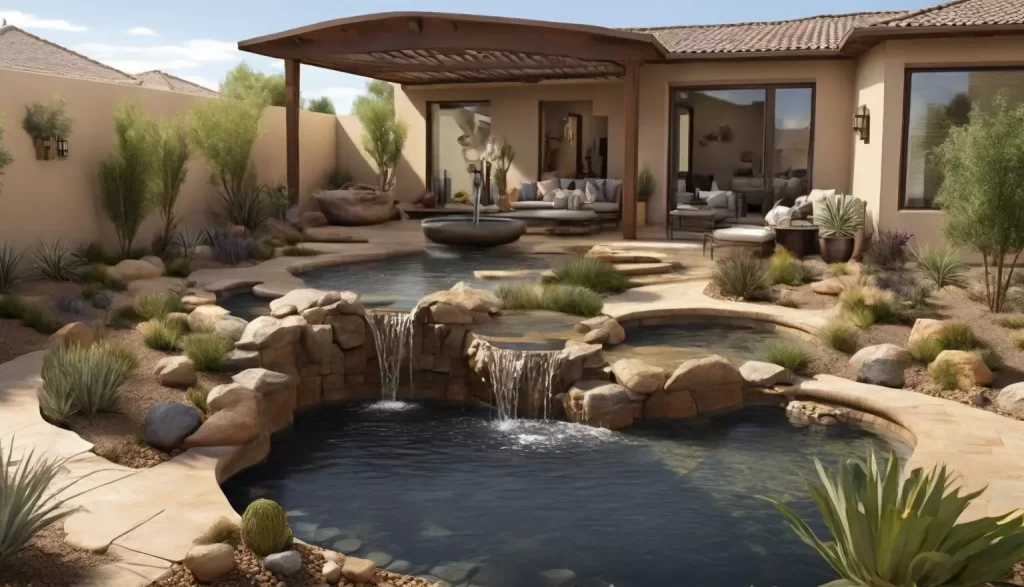When it comes to landscaping in Central Texas, one of the smartest approaches is to draw inspiration from the desert. With its hot summers, unpredictable rainfall, and challenging soil conditions, Central Texas closely mirrors the climate of arid and semi-arid regions. Desert-inspired landscaping not only embraces the natural beauty of the area but also promotes sustainability, low maintenance, and water conservation.
In this post, we’ll explore how you can create a beautiful, eco-friendly, and functional desert-inspired landscape that works specifically for Central Texas.
Why Go Desert-Inspired in Central Texas?
Central Texas homeowners face specific challenges: scorching summers, water restrictions, and alkaline clay soils. Traditional, high-maintenance lawns and water-hungry plants often struggle to thrive here. Desert-inspired landscaping, also known as xeriscaping, is a practical alternative that embraces drought-resistant design and native plant life.
Here’s why desert-inspired landscaping works so well in Central Texas:
Drought resilience: Uses plants that can handle heat and low rainfall.
Low maintenance: Once established, desert landscapes require minimal care.
Eco-friendly: Reduces water use and supports local ecosystems.
Cost-effective: Cuts down on irrigation and upkeep expenses.


Step-by-Step: Designing Your Desert-Inspired Yard
1. Start with a Smart Plan
Begin by assessing your outdoor space. Map out sunny and shady areas, soil type, and natural water flow. Desert landscaping is about working with the environment, not against it.
Pro tip: Use gravel, crushed granite, and decomposed granite to define walkways, patios, and garden beds — these hardscaping elements are key in desert-style designs.
2. Choose Drought-Tolerant and Native Plants
Plant selection is where desert landscaping truly shines. Aim for a mix of colors, textures, and heights using native and desert-adapted plants.
Top Drought-Tolerant Plants for Central Texas:
Texas Sage (Leucophyllum frutescens) – Gray-green foliage with stunning purple blooms.
Red Yucca (Hesperaloe parviflora) – Spiky yet elegant, with coral-red flowers.
Agave and Cactus Varieties – Striking form and low water needs.
Blackfoot Daisy – A hardy groundcover with cheerful white flowers.
Prickly Pear Cactus – Iconic and colorful, with edible pads and fruits.
Using native plants not only ensures survival in tough conditions but also attracts pollinators and supports biodiversity.
3. Add Hardscaping for Structure and Style
Hardscaping is the backbone of any desert-inspired yard. Think:
Gravel beds for texture and contrast
Stone pathways that guide movement
Dry creek beds to manage water runoff
Flagstone patios for outdoor seating areas
Decorative boulders or sculptures for visual interest
Hardscaping reduces the amount of thirsty turfgrass and creates an intentional, structured look.
4. Use Mulch and Groundcover Wisely
Organic or inorganic mulch (like crushed granite) helps retain moisture and regulate soil temperature. Mulch also discourages weeds and gives a clean, cohesive appearance to your plant beds.
Consider groundcovers like:
Sedum varieties
Trailing lantana
Woolly stemodia
These plants spread out, fill space, and require very little care once established.
5. Incorporate Water Harvesting Techniques
Rain is precious in Central Texas — don’t let it go to waste. Desert landscaping often includes water-saving features such as:
Rain barrels to collect roof runoff
Permeable pavers that let rain soak into the ground
Swales or berms to direct and hold rainwater
These techniques align with xeriscaping principles and help your plants thrive during dry spells.
Tips to Keep It Thriving
Water deeply but infrequently to encourage deep root systems.
Group plants by water needs for more efficient irrigation.
Trim only when necessary — many desert plants thrive when left alone.
Watch out for overwatering, which is the #1 killer of drought-tolerant plants.


Final Thoughts: A Landscape That Lives in Harmony with Central Texas
Desert-inspired landscaping is not just about survival — it’s about celebrating the rugged beauty of Central Texas. By choosing native and drought-tolerant plants, incorporating thoughtful hardscaping, and using smart water management techniques, you can create an outdoor space that’s both stunning and sustainable.
Whether you’re revamping a full yard or starting small with a corner garden, embracing the desert aesthetic can lead to a truly rewarding, eco-friendly landscape.
